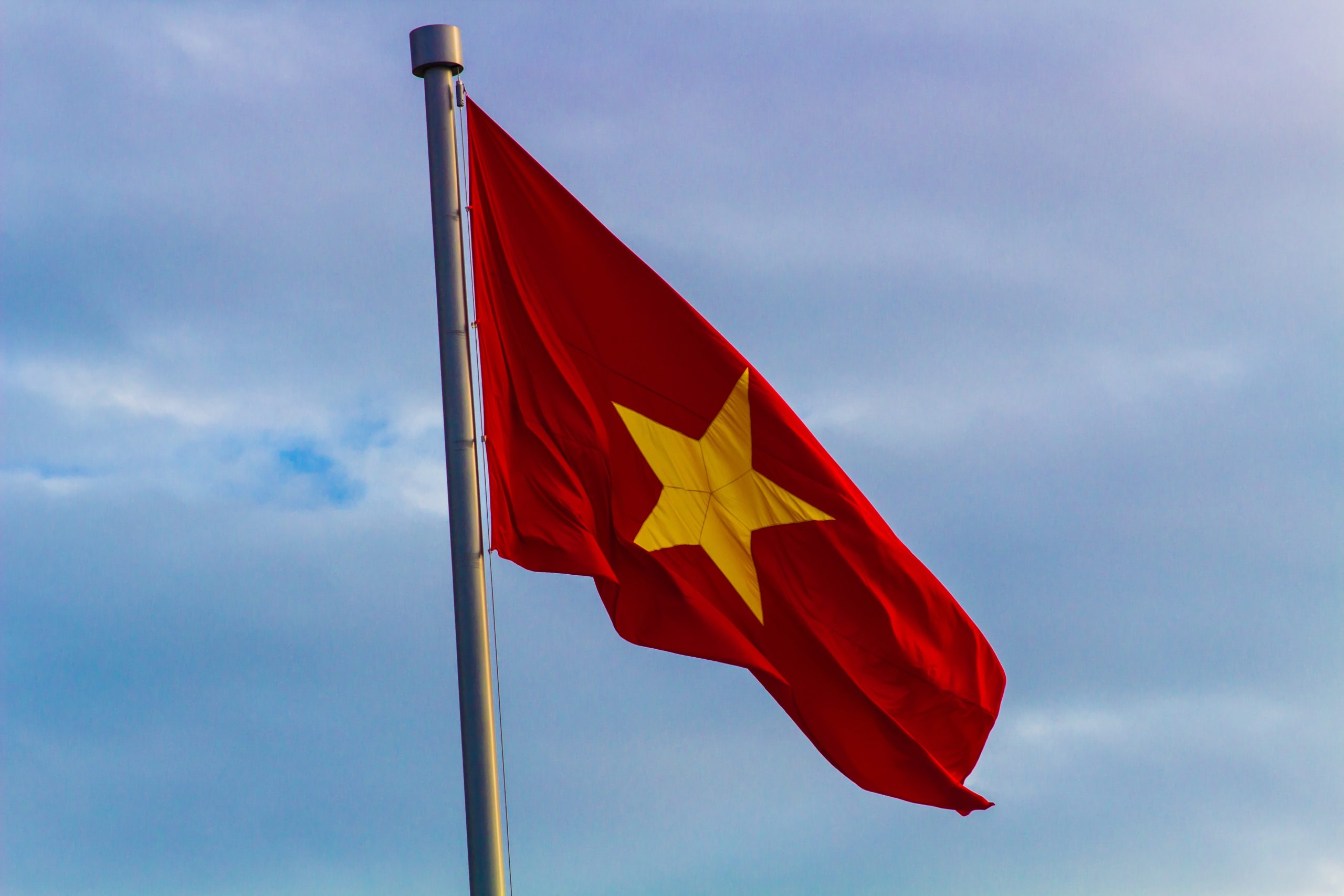
Written by Phuong Pham
On the 8th of June 2020, Vietnam ratified the EU-Vietnam Free Trade Agreement (EVFTA) (Minh, 2020), which took effect on the 1st of August (Dezan Shira & Associates, 2020). The EVFTA seeks to form a free-trade area between Vietnam and the EU and is expected to pave the way for further economic cooperation between Vietnam and the EU. After eight years of negotiations, it is the product of those bilateral efforts. Consequently, the EVFTA entails several implications for the EU-Vietnam strategic relations.
Firstly, the EU’s economic presence in Vietnam will substantially increase in the upcoming future. Vietnam has long been considered one of the most prominent emerging Asian markets given its geographical location, large population and high GDP growth (World Bank, 2020). Recently, due to its impressive response to COVID-19 (Le Thu, 2020) and its expected quick recovery in the post-pandemic period (Humphrey, 2020), Vietnam has attracted more Foreign Direct Investment (FDI), specifically from Western companies. Additionally, as a result of the increased tension in the United States-China trade war, major economies, including the EU, have been seeking to decouple from China and move their firms to other countries. Given its aforementioned favourable conditions, Vietnam would undoubtedly become one of the most popular destinations for FDI, and the EVFTA could streamline the EU investment to Vietnam. Following this FTA, 65 percent of duties on EU exports to Vietnam will be eliminated, while the remaining will be phased out over a period of 10 years (Dezan Shira & Associates, 2020). Such a huge tariff reduction would promise a bright future for EU investment in Vietnam.
Secondly, actively pursuing multilateralisation and the diversification of foreign trade since opening the door for international cooperation in 1986, Vietnam considers the EU as its strategic trading partner given the massive scale of the EU economy and its technological advancement (VOA News, 2020). Vietnam’s ratification of the EVFTA dovetails with its interest in approaching the EU market. Actively pursuing multilateralisation and the diversification of foreign trade since opening the door for international cooperation in 1986, Vietnam considers the EU as a key strategic trading partner, given the massive scale of the EU’s economy and its technological advancement (VOA News, 2020). The FTA decreases tariffs for Vietnamese exports of seafood, textiles, and wood products to the EU, which are goods that Vietnam has a significant competitive advantage over (VOA News, 2020). Consequently, the EVFTA would not only help Vietnam increase its exports to the EU, but also improve its production technology which is still relatively low compared to its EU partners. By ratifying the EVFTA, Vietnam can achieve its foreign trade goals, as well as modernising its economy and becoming more competitive in the global value chain.
Nevertheless, the EVFTA poses several challenges for Vietnam. The most apparent one is the increased competition in Vietnam’s domestic market once the tariff for EU exports is reduced. The middle and upper middle classes in Vietnam have grown quickly in recent years (Jennings, 2020), causing a shift in domestic consumption, specifically by increasing demand for products of higher quality and more diverse categories. The EVFTA would mean that products from the EU would have a more competitive advantage in Vietnam’s market. Domestic Viatnamese products would not be able to compete. Vietnam would also face challenges in standardising and regulating its products. For example, with agricultural products, the EU has a high standard for sustainability, labelling and environmental protection (Pangasius Vietnam, 2020). Vietnamese agro-product exports have yet to be able to match the EU in terms of safety, quality and appearance. This therefore hinders Viatnamese exports to the EU. The Vietnamese government and businesses will have to work together to reform Vietnam’s regulations and standards in order to help Vietnamese export its products successfully to the EU market.
Additionally, Vietnam will have to address its domestic political challenges in order to fully reap the EVFTA’s benefits. Besides the technical and environmental requirements above, the agreement also seeks further social progress in Vietnam, including labour rights and human rights (European Interests, 2020). Vietnam is considered one of the most repressive regimes in Asia, with an abysmal record of human rights violations (Human Rights Watch, 2019). It also faces issues with labour rights, ranging from forced labour and child labour to human trafficking (International Labor Rights Forum, n.d.; Khidhir, 2019). These issues would decrease the efficacy of the EVFTA for Vietnam, given the EU’s demands on human rights and labour protection. Vietnam’s ability to improve its conditions regarding human rights in the post-EVFTA period is questionable at best, as the regime has done little to solve this so far. It would be more likely that Vietnam take action to improve its labour rights and solve its above-mentioned issues.
To conclude, the EVFTA opens up many opportunities for both Vietnam and the EU to deepen their bilateral economic ties. However, it also entails Vietnam having to solve various domestic issues after ratifying the agreement. Facing both opportunities and challenges, Vietnam must make adjustments in terms of trade and domestic policy to fully benefit from this opportunity and overcome the challenges posed by the agreement. Ultimately, the EVFTA would be a showcase for multilateral economic cooperation, serving as a foundation for both economies to expand their global economic activities in the future.
References
Dezan Shira & Associates. (2020). Vietnam-EU Trade: EVFTA Comes Into Effect. Retrieved from https://www.vietnam-briefing.com/news/vietnam-eu-trade-evfta-comes-into-effect.html/
European Interests. (2020). EU-Vietnam FTA includes binding rules on climate, labour and human rights. Retrieved from https://www.europeaninterest.eu/article/eu-vietnam-fta-includes-binding-rules-climate-labour-human-rights/
Human Rights Watch. (2019). Vietnam Events of 2019. Retrieved from https://www.hrw.org/world-report/2020/country-chapters/vietnam
Humphrey, C. (2020). Vietnam crushed the coronavirus outbreak, but now faces severe economic test. Retrieved from https://www.theguardian.com/global-development/2020/may/06/vietnam-crushed-the-coronavirus-outbreak-but-now-faces-severe-economic-test
International Labor Rights Forum. (n.d.). Forced Labour in Vietnam. Retrieved from https://laborrights.org/our-work/forced-labor-vietnam
Jennings, R. (2020). Vietnam’s Growing Middle Class Expected to Double by 2020. Retrieved from https://learningenglish.voanews.com/a/higher-priced-goods-popular-with-vietnams-middle-class/3496221.html
Khidhir, S. (2019). Vietnam: From child labour to trafficking. The Asean Post. Retrieved from https://theaseanpost.com/article/vietnam-child-labour-trafficking
Le Thu, H. (2020). Vietnam: A Successful Battle Against the Virus. Retrieved from https://www.cfr.org/blog/vietnam-successful-battle-against-virus
Minh, A. (2020). Vietnam ratifies EU free trade agreement. Retrieved from https://e.vnexpress.net/news/business/economy/vietnam-ratifies-eu-free-trade-agreement-4112027.html
Pangasius Vietnam. (2020). Vietnam-EU FTA: Opportunities and challenges. Retrieved from https://wtocenter.vn/tin-tuc/3142-vietnameu-fta-opportunities-and-challenges
VOA News. (2020). EU Approves Trade Deal With Vietnam. Retrieved from https://www.voanews.com/economy-business/eu-approves-trade-deal-vietnam
World Bank. (2020). Vietnam Overview. Retrieved from https://www.worldbank.org/en/country/vietnam/overview

 Domestic abuse in England & Wales: a historical legal gap bridged by Section 76 of the Serious Crime Act 2015?
Domestic abuse in England & Wales: a historical legal gap bridged by Section 76 of the Serious Crime Act 2015?  Looking back at Burden and Burden v. the UK: Are siblings being legally overlooked?
Looking back at Burden and Burden v. the UK: Are siblings being legally overlooked?  The European Housing Crisis from the Human Rights Perspective
The European Housing Crisis from the Human Rights Perspective  Female Suicide Bombers As A Security Threat: Towards A More Comprehensive And Inclusive Approach
Female Suicide Bombers As A Security Threat: Towards A More Comprehensive And Inclusive Approach 


